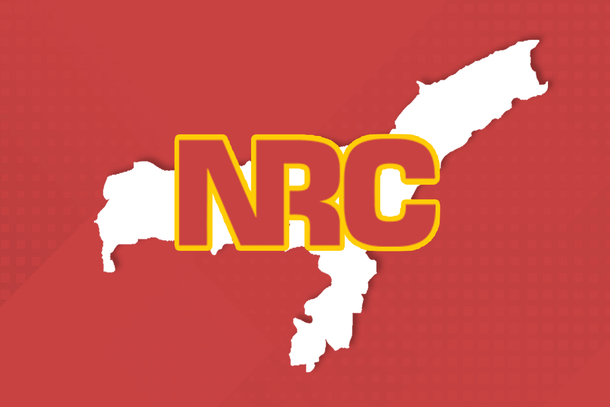Politics
Assam NRC: Real Scale Of Infiltration Revealed When Census Figures Are Compared With Electoral Rolls
Jaideep Mazumdar
Sep 02, 2019, 06:25 PM | Updated 06:25 PM IST
Save & read from anywhere!
Bookmark stories for easy access on any device or the Swarajya app.


The final National Register of Citizens (NRC) for Assam that was published last weekend told a sordid and shameful tale of a conspiracy (read this) to legitimise the unwelcome presence (in Assam) of millions of illegal Muslim infiltrators from Bangladesh.
It is now clear that the process of updating the NRC was rigged, and was subverted by the greed and misdeeds of those involved in the exercise.
But then, this is not the first time that government officials in Assam (they were responsible for updating the NRC) fudged figures and manipulated exercises like the preparation of electoral rolls or conducting the decadal census of citizens.
A study of various statistical exercises carried out over the past few decades in Assam point to gross anomalies.
It is no secret that Assam’s demography has changed, perhaps irreversibly, over the past seven decades.
Thanks to unchecked infiltration of Muslims from Bangladesh, the percentage of Muslims has risen from 21 per cent in 1951 to nearly 35 per cent now.
That, however, is the official census figure. But the reality could be much more alarming. Census figures, say many, are fudged so as depress the number of Muslims in Assam.
“The population of Muslims is kept deliberately low so as not to cause alarm among the majority community. If a decadal census reveals a sharp increase in the population of Muslims, as is actually the case, it would trigger huge protests. So the census always shows a normal trajectory of growth of the Muslim population,” said Pradip Bhuyan, who was closely involved in moving the Supreme Court to order the NRC updation exercise.
But the periodic revision of electoral rolls tells a completely different story and here, the increase in the number of Muslims who get into the electoral rolls is much higher than the growth in their population as per the census figures.
How is that possible? “It is obvious that the census is fudged and manipulated to hide the true picture of the growth in Muslim population in Assam,” says Bhuyan.
Bhuyan’s allegations are borne out by statistical analysis. From 1981 to 2011, for instance, there is no correlation between the growth in Assam’s population as revealed in the census and the increase in the number of voters in the electoral rolls.
The overall average growth rate in Assam’s population during these three decades is 20.07 per cent, which is even below the national average of 21.03 per cent during the same period.
However, the increase in the number of voters (as per periodic revision of electoral rolls during this same period) is 35 per cent.
The most plausible explanation for this is that officials involved in census enumerations and supervising the entire operation were told, in all probability by the ruling politicians to fudge figures to keep the Muslim population much lower than what it actually was.
But during revision of electoral rolls, the names of all Muslims of eligible age were included in the voters’ list.
After all, the decadal census is of little importance compared to the electoral rolls. Getting one’s name into the electoral rolls in order to be able to vote is much more important that being counted in the census.
Many districts along the India-Bangladesh border have witnessed a sharp rise in Muslim population and have become Muslim-majority districts within the span of just six decades.
Even if the decadal growth rate in Assam’s population from 1981 to 2011 is assumed to be a very conservative 25 per cent — experts say it would be around 30 per cent —then Assam’s population in 2011 would have been around 3.52 crore and in 2015 (when the process of NRC updation started), the projected population would have been 3.87 crore.
But the census projections put Assam’s population in 2015 at 3.39 crore.
Thus, the difference in Assam’s actual population and projected census population would have been 48 lakh. But that is not all. In 2015, as many as 3.30 crore people applied for inclusion of their names in the NRC.
That means, 57 lakh people (3.87 crore minus 3.30 crore) did not apply for inclusion in the NRC. Why? The only explanation can be that they are new infiltrators from Bangladesh and have not been able to procure fake documents — birth certificates, school certificates and residence certificates — as yet.
Hence, since they knew the chances of getting their names included in the NRC in the absence of such fake and forged documents would be nil, they did not bother to apply.
There’s more. Of the 3.3 crore people who applied for inclusion of their names in the NRC, the first draft (published in July 2018) had included 2.89 crore names.
That means the names of 40.4 lakh people were kept out of the draft NRC. But of them, only 36.26 lakh applied once again for inclusion of their names.
Why didn’t the remaining 4.17 lakh re-apply last year? Once again, the only explanation can be that they knew their claims were weak and did not bother to re-apply.
The point here is: Where are the more than 61 lakh people (57 lakh who did not apply for inclusion in NRC in 2015, plus the 4 lakh who did not do the same last year), who are definitely illegal infiltrators from Bangladesh?
Many of them would have migrated to other parts of India to work as labourers. But a large number of them would still be remaining in Assam, perhaps concentrated in the Muslim-majority districts of the state.
It is not easy to trace out these missing millions.
Even tracing the 4.17 lakh who opted not to re-apply for inclusion of their names in the NRC last year will not be easy.
A senior IAS officer who retired as additional chief secretary of Assam told Swarajya that local-level politicians of the Congress had always exerted a lot of pressure on the lower and middle-level bureaucracy to manipulate census operations and revision of electoral rolls.
“The objective has always been to play down the presence of Bangladeshi Muslims and show the growth of the Muslim population as normal or even below average in the census. And then to enroll as many of them as possible, and on the basis of fake and forged documents, in the electoral rolls,” he said.
“People just check the electoral rolls to find if their names are on it. No one will get down to the onerous task of counting the number of voters in each constituency and compiling a figure for the whole state. We also don’t bother to look closely at the comprehensive figures of total number of voters that the election authorities give out before polls,” explained the retired bureaucrat.
He also explained that lower and mid-level officials have to do the bidding of local-level politicians.
And since Assam has been ruled mostly by the Congress since Independence, officials who conduct census operations and update electoral rolls have always followed their instructions.





